Satellite preparation
When they arrive in French Guiana, satellites are taken in for several weeks of preparation before launch. Europe’s spaceport provides its customers—who come from all over the world—with state-of-the-art facilities that enable these operations to be performed in the best possible conditions.
Well-honed logistics
A VIP welcome
The vast majority of satellites arrive in French Guiana by plane, a few weeks before the launch. Transporting them requires huge cargo planes that can carry the pressurised containers that keep the satellite safe from moisture, heat and impacts.
As soon as a satellite arrives at Félix Eboué Airport in Matoury, the teams at Europe’s spaceport receive it and place its container on a tow truck. This exceptional convoy then heads for Kourou to reach the site where the satellite will be prepared.
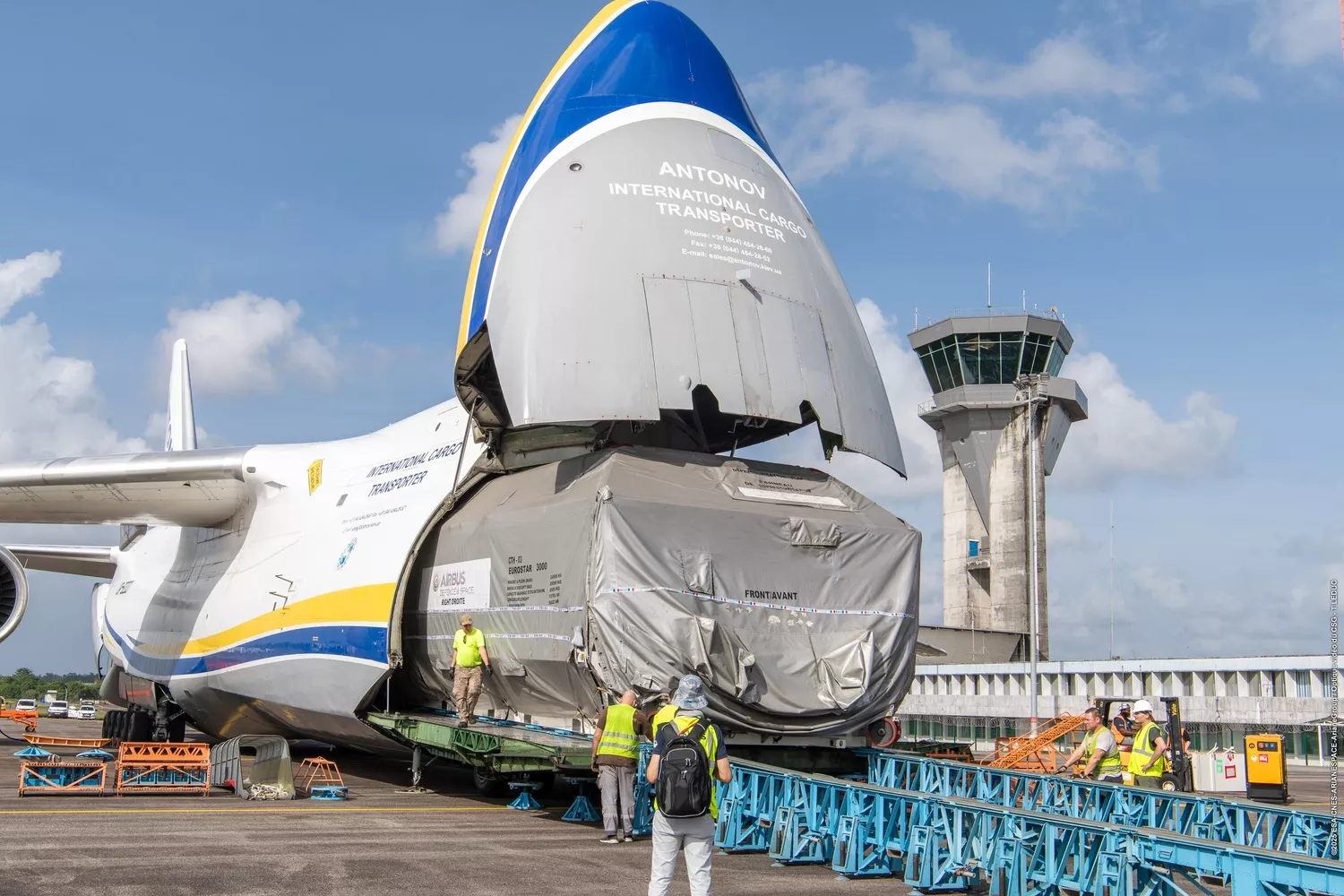
Arrival of the CSO 3 satellite in its container at Felix Eboué airport.
First-class transport
Transport logistics are an essential aspect in the preparation of satellites, when they arrive at the airport but also in the preparation facilities, and until they are integrated on the launcher.
Within the clean room facilities, each satellite is moved on trolleys or air cushions. To be transferred from one building to another, the satellite is placed in a pressurised container that keeps it in clean room conditions throughout the journey.
After preparation, the fairing containing the satellite(s) is transported to the launch pad by a 180-tonne, 6-metre wide and 26-metre long wheeled vehicle designed to carry it safely: the Upper Composite Trailer (UCT).
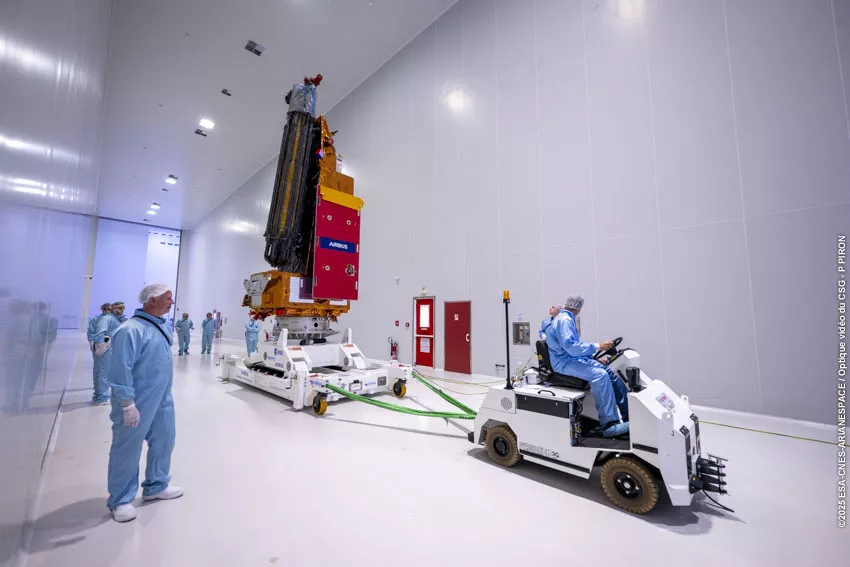
Transfer of the Biomass satellite onto its pallet between 2 rooms in the S5 EPCU payload preparation facilities (4 April 2025)
Tailored treatment at the EPCUs
Designed to receive and prepare satellites, the EPCUs (Ensembles de Préparation des Charges Utiles - payload preparation complexes) are a key point in the international collaboration at Europe’s spaceport. The Spaceport’s teams are dedicated to providing customers from all over the world with the highest level of operational support.
There are three EPCUs, with a total of 3,200 m² of clean room facilities.
• S1, located at the Technical Centre, has 2 halls, S1A and S1B, commissioned in 1980 and 1985 respectively. It is used for non-hazardous operations (assembly, checks and tests).
• S3, the closest to the Ariane and Vega launch complexes, consists of 2 halls that were deployed at the end of the 1980s. It is qualified for so-called hazardous operations (final integration and filling satellites with propellant).
• S5, located on the Route de l’Espace, has been operational since 2001. It consists of 3 buildings linked by clean corridors 12 m high and 8 m wide, enabling satellites to be transferred quickly and safely, where they can be fully prepared:
- S5C is where non-hazardous operations are carried out, with a 700 m² clean room that can be divided into two 350 m² areas.
- S5A and S5B, measuring 300 m² and 400 m² respectively, are dedicated to hazardous operations.
The three sites provide customers who come to launch their satellites with furnished offices, a control room, and facilities with a controlled atmosphere containing all the equipment required for preparing the satellites, whether for lifting or supplying them with fluids or electricity: the clean rooms.
As each satellite has its own specific characteristics, customers benefit from services that are tailored to their needs. One example is the preparation campaign for Biomass, launched on Vega-C on 29 April 2025.
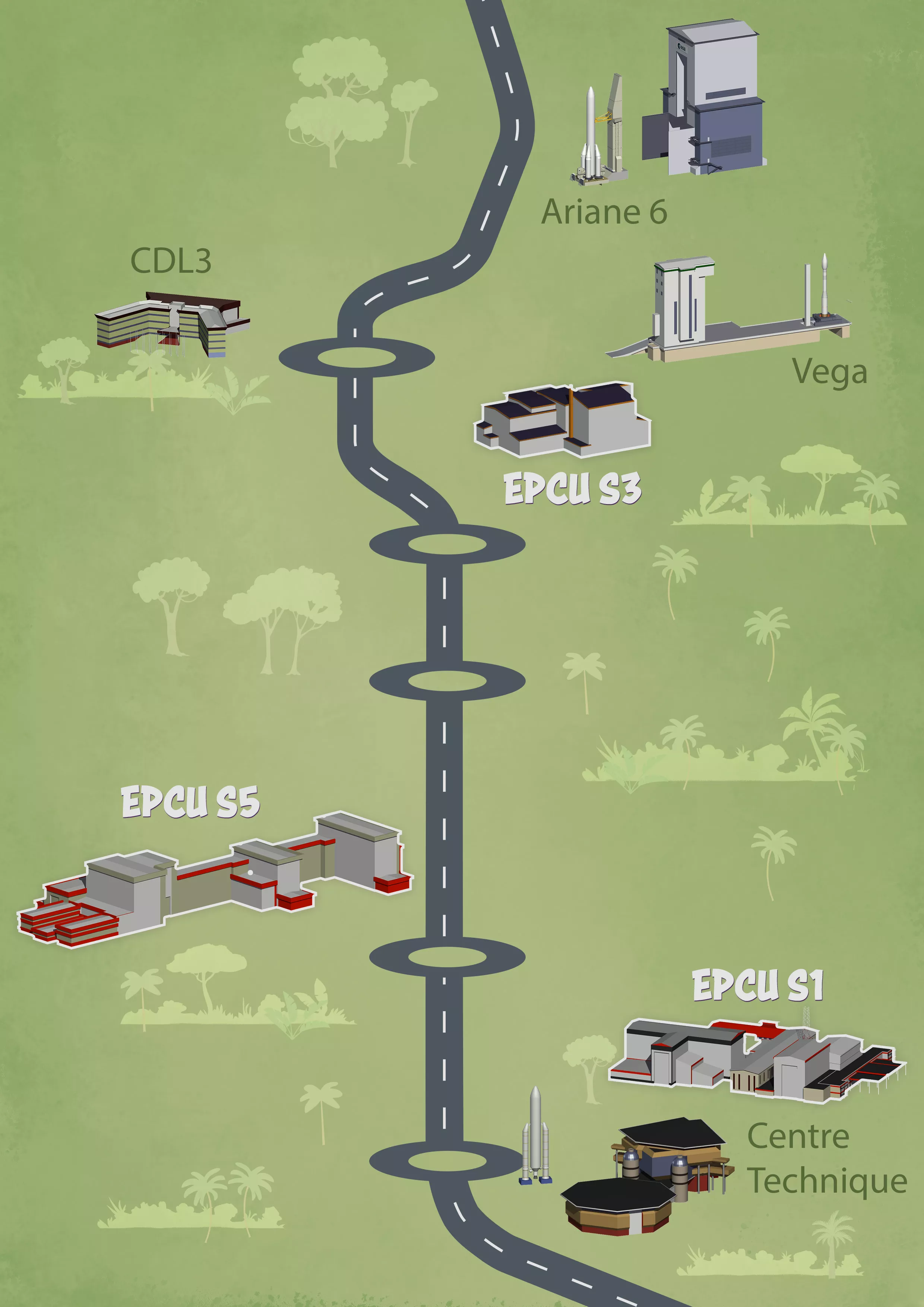
Clean rooms
Also known as clean halls, these rooms meet extremely rigorous criteria: the concentration of particles in the air is measured and controlled. These precautions are necessary due to the extreme conditions of the space environment: once in orbit, any particles on the satellite could melt or freeze and damage its equipment.
Temperature, humidity and relative pressure are also maintained at the level required by the customer at all times.
Anyone operating in the satellite preparation facilities must wear coveralls, a cap and overshoes and, depending on the operation, gloves and a mask. The clean hall floors, made of anti-static resin, are also designed to avoid particulate contamination.
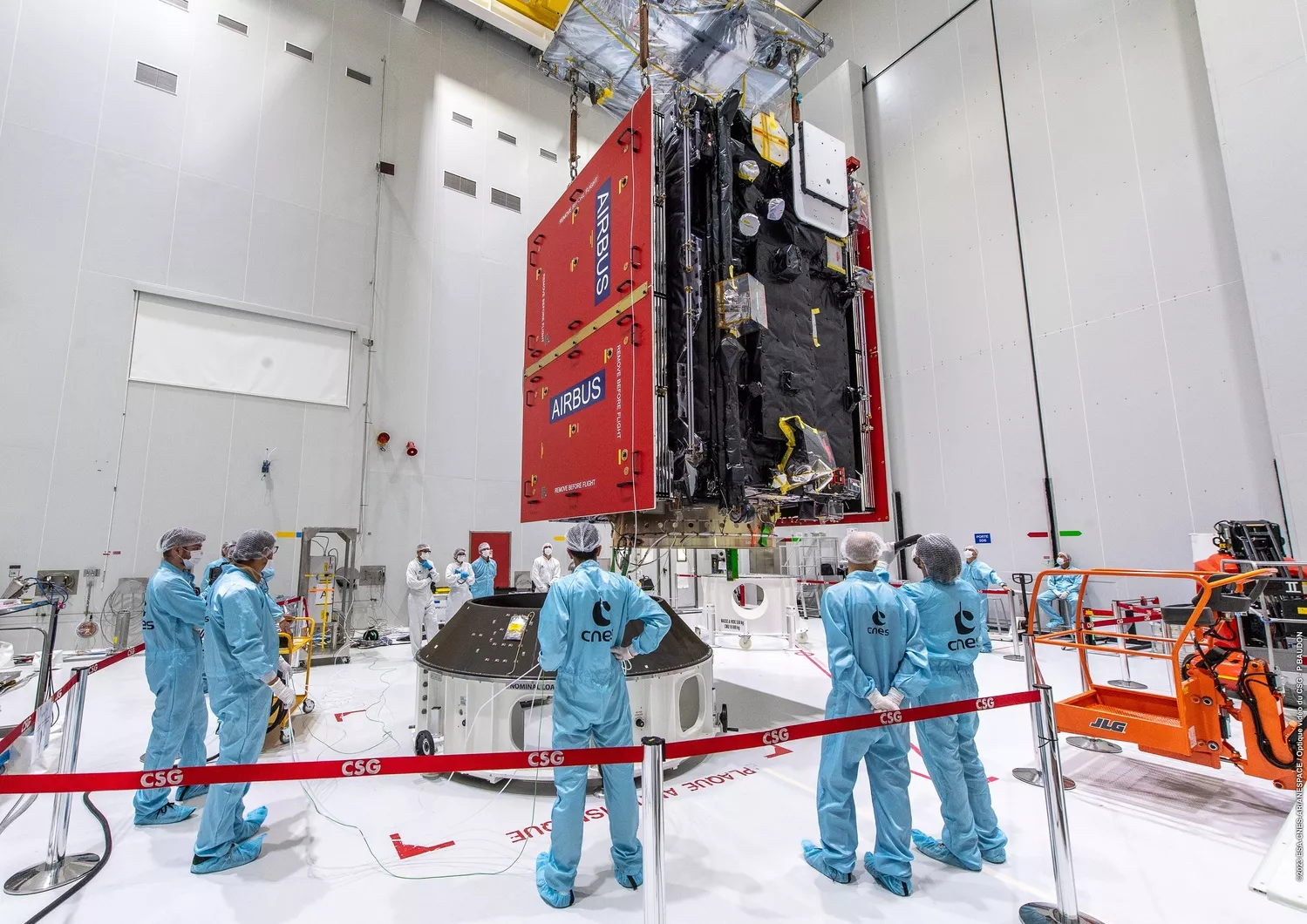
Placement of the Juice satellite on the Launch Vehicle Adapter (LVA) in building S5A at Europe’s spaceport (21 March 2023).
What does preparing a satellite mean?
Checks and tests
Electrical checks, integration operations, mechanical checks and more: the satellite undergoes a battery of tests during the weeks from the time it is received by the teams at Europe’s spaceport until it is integrated on the launcher.
Filling with fuel
A few days before its integration on the launcher, the satellite is filled with propellants, its fuel. This delicate operation is carried out by the ergoliers (fuel technicians): in their uniforms which supply them with breathable air, they carry out the filling operation under the guidance of the nearby control room.
Before reaching the launcher: encapsulation
Once the satellite has been fully prepared, it is returned to its encapsulation site to form the upper composite.
For a launch with Vega-C, these last operations take place at the EPCUs, while for Ariane 6 the fairing is fitted in the Encapsulation building (still called EFA - Encapsulation Facility Ariane).
A single satellite is assembled with its payload adapter. For a multiple launch, the satellites are installed on a double or triple launch structure, or even on a “Dispenser” for a constellation of small payloads: it is these that will enable the successive release of the payloads into orbit.
Encapsulation then consists of bringing and closing the 2 half-fairings around the satellites.
The upper composite is then ready for transferral to the launch pad, a few days before launch, to be installed at the top of the launcher.
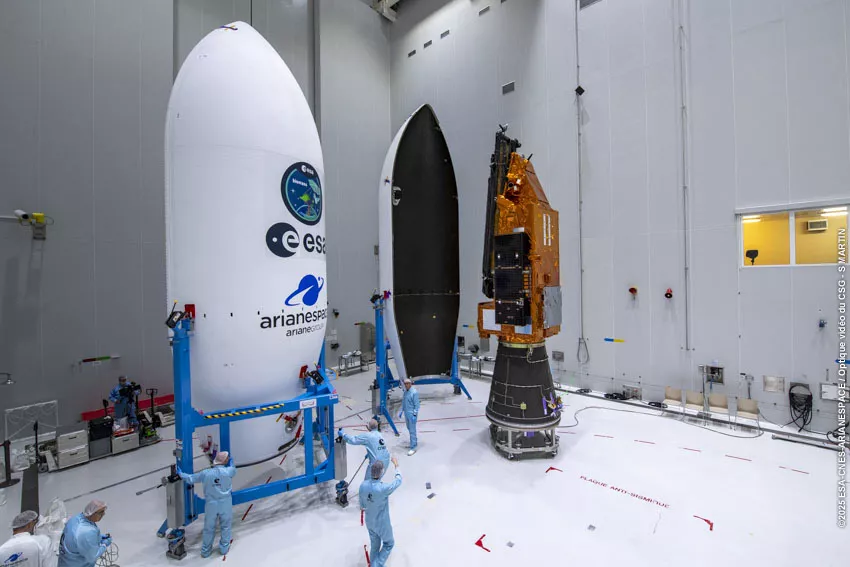
Two half-fairings being assembled around the Biomass satellite at S5 EPCU (Flight VV26)
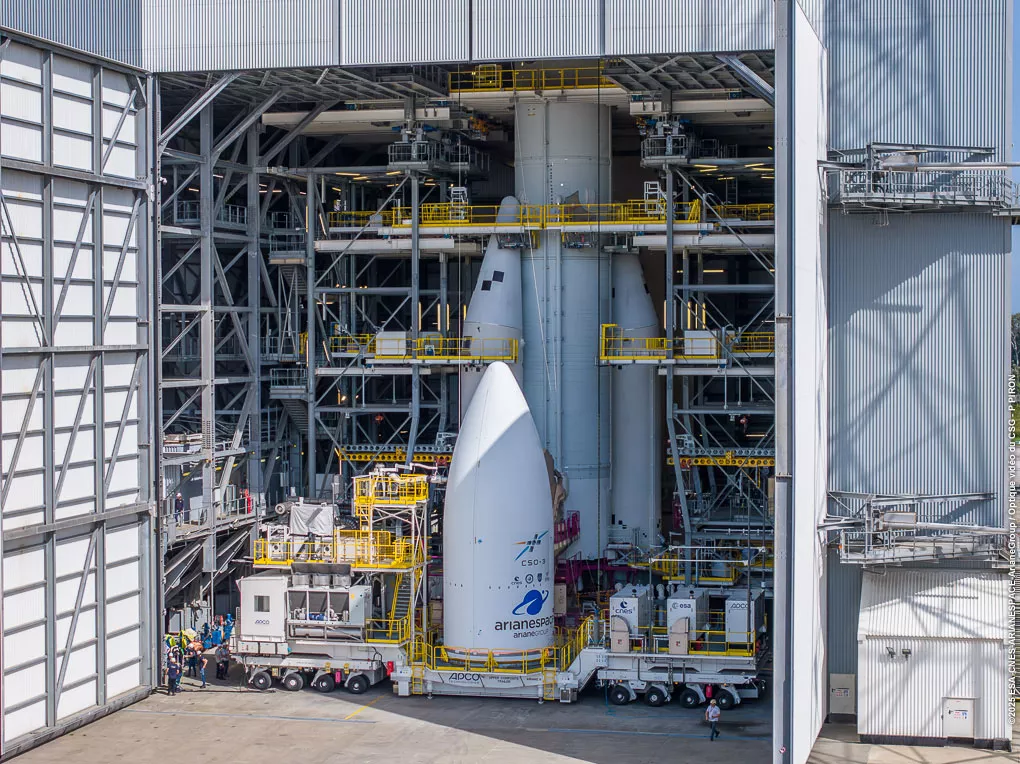
The Ariane 6 fairing arrives at the foot of the launcher, in the Ariane 6 launch facilities gantry on its carrier, the Upper Composite Trailer.